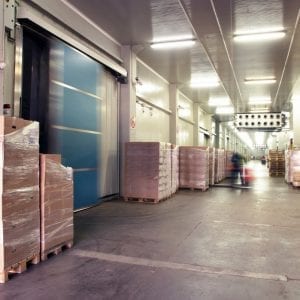
View original at www.dcvelocity.com
Demand for cold storage warehousing is rising nationwide, creating a growing need for material handling equipment that can withstand harsh-temperature environments. Choosing the right forklift battery is an important part of that process, as it can mean the difference between sluggish performance and top-notch productivity. We asked a handful of battery makers about what works best in refrigerator and freezer environments and found that some of the newest battery technologies on the market are making the most headway in low temperatures. HEAT IT UP All types of batteries, from traditional lead-acid batteries to newer technologies such as lithium-ion and thin-plate pure lead (TPPL) varieties, work in cold storage environments. The difference is how well they perform based on the requirements of the job. Heat is an important factor; a warm battery will perform better than a cold one because the chemical energy in a battery becomes less available as the battery gets colder, explains Tim Vaughan, director of engineering for lithium-ion battery manufacturer Flux Power . “Just like it can be difficult to start your car on a cold morning, [lift] trucks can become more sluggish [in colder conditions],” he says, adding that a heated battery results in less degradation. Lead-acid batteries that are in continuous use throughout a shift, for example, will perform better than those used intermittently, which will cool down during periods of inactivity and then warm up again when put back in use. But in general, these batteries don’t work as well as some of the newer technologies do in harsh environments, Vaughan adds. Several studies have shown that lead-acid batteries can lose as much as 30% of their capacity in refrigerator environments and up to 50% in freezer environments. Other batteries are specifically designed to work in cold environments. These include lithium-ion batteries that […]



Leave a Reply
You must be logged in to post a comment.